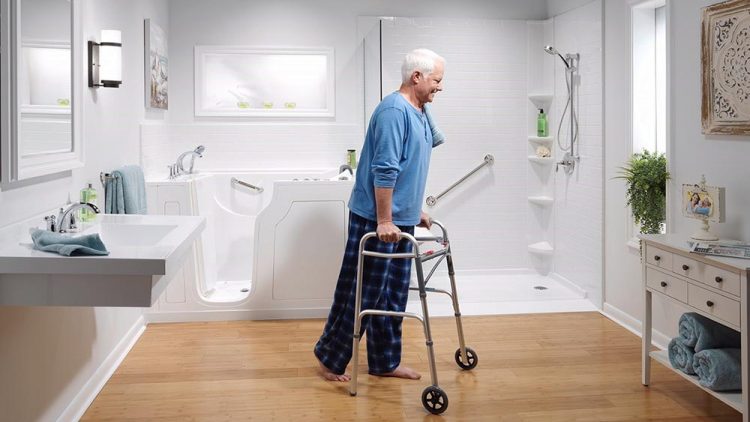Physical Therapy Disability Evaluations
Physical Therapy Disability Evaluations are assessments conducted by physical therapists (PTs) to determine how a person’s injury, illness, or condition impacts their functional abilities—particularly in relation to work, daily living, or legal disability claims.
These evaluations are often used in workers’ compensation cases, Social Security disability claims, personal injury lawsuits, or long-term disability insurance assessments.
🧾 What’s Included in a Physical Therapy Disability Evaluation?
1. Medical & Functional History
-
Diagnosis, symptoms, and duration
-
Past treatments, medications, and imaging
-
Patient-reported limitations (walking, lifting, reaching, etc.)
2. Objective Physical Assessment
-
Range of motion (ROM)
-
Strength testing
-
Endurance
-
Gait and mobility
-
Balance and coordination
-
Pain behavior and reporting
-
Use of assistive devices (e.g., braces, canes)
3. Functional Capacity Evaluation (FCE) (if ordered)
-
Tests real-world work tasks like:
-
Lifting/carrying
-
Pushing/pulling
-
Standing/sitting tolerances
-
Repetitive motion tolerances
-
Dexterity and fine motor skills
-
4. Assessment of Work Limitations
-
Whether the patient can perform sedentary, light, medium, or heavy work
-
Any restrictions (e.g., no lifting over 10 lbs, avoid prolonged standing)
5. Disability Rating (if within scope and requested)
-
Often requested by insurers, attorneys, or physicians
-
PTs may contribute to disability ratings in some states but typically do not assign legal disability determinations
📂 Where Are These Evaluations Used?
| Situation | Role of the PT Evaluation |
|---|---|
| 🏢 Workers’ Compensation | Helps determine return-to-work readiness or permanent restrictions |
| ⚖️ Personal Injury Claims | Offers evidence of long-term or partial disability |
| 🏛️ Social Security Disability | Supplementary to physician findings; shows functional limitations |
| 🛡️ Disability Insurance | Used to justify short- or long-term benefit eligibility |
| 🏥 Post-Surgical Recovery | Assesses readiness for return to prior level of function |
👨⚖️ Legal Considerations
-
PTs cannot make final disability determinations, but they provide critical evidence used by physicians, insurers, and courts.
-
Documentation must be objective, thorough, and defensible—especially in cases that may go to trial or appeal.
✅ Summary Checklist of What a PT Will Evaluate
| Area | Examples of What’s Tested |
|---|---|
| Strength & Endurance | Lifting tests, grip strength, walking distance |
| Mobility & ROM | Joint measurements, flexibility |
| Functional Activities | Sit/stand duration, stairs, dressing, bathing |
| Workplace Readiness | Task simulations, posture tolerance |
| Pain & Behavior | Pain scales, consistency, symptom exaggeration screening |
Sample Template of a Physical Therapy Disability Evaluation Report
Here is a sample template for a Physical Therapy Disability Evaluation Report. This can be adapted for use in clinical, legal, or insurance settings and follows a professional format aligned with common industry standards.
🧾 Physical Therapy Disability Evaluation Report
Patient Name: ______________________________
Date of Evaluation: _________________________
DOB: _______________ Age: __________
Referring Physician: ________________________
Diagnosis/ICD-10 Code(s): ___________________
I. Reason for Evaluation
Example: “To assess functional limitations and determine physical disability status following a lumbar spine injury sustained at work on 03/15/2025.”
II. Medical & Functional History
-
Date of Injury/Onset: ____________________
-
Mechanism of Injury: _____________________
-
Surgical History: _________________________
-
Past Therapy or Treatment: ________________
-
Pain Complaints: _________________________
-
Medications: ____________________________
III. Subjective Functional Complaints
The patient reports difficulty with the following:
☐ Lifting ☐ Walking ☐ Standing
☐ Reaching ☐ Sitting ☐ Driving
☐ Stairs ☐ Household chores
☐ Work activities (describe): _____________________
IV. Objective Examination
A. Posture and Gait:
Description of posture, gait deviations, use of assistive devices.
B. Range of Motion (Active & Passive):
| Joint | Measured ROM | Norm ROM | Pain |
|---|---|---|---|
| Lumbar Flexion | ____° | 60° | ☐ Yes ☐ No |
| Shoulder Abduction | ____° | 180° | ☐ Yes ☐ No |
| (Add more as needed) |
C. Strength Testing (MMT 0–5 Scale):
| Muscle Group | Left | Right |
|---|---|---|
| Quadriceps | ___ | ___ |
| Biceps | ___ | ___ |
D. Functional Testing:
-
Sit-to-stand test: ___ reps in 30 seconds
-
Walk test (e.g., 6-Minute Walk Test): ____ ft
-
Stair test: ___________________________
E. Endurance and Fatigue:
Document tolerances for activity durations and fatigue levels.
F. Pain Assessment:
-
Pain Scale: ___ / 10
-
Location: ___________________________
-
Duration/Frequency: __________________
V. Functional Capacity / Work Simulation Testing (if applicable)
| Task | Result | Limitation |
|---|---|---|
| Lift from floor | ___ lbs | ☐ Full ☐ Limited |
| Carry 25 ft | ___ lbs | ☐ Full ☐ Limited |
| Push/Pull | ___ lbs | ☐ Full ☐ Limited |
| Sit/Stand tolerance | ___ mins | ☐ Full ☐ Limited |
VI. Assessment & Summary
“Patient demonstrates reduced lumbar mobility, decreased endurance, and moderate limitation in lifting and prolonged standing. Observed effort was consistent with reported symptoms. Functional tolerance is currently below medium-duty work classification.”
VII. Clinical Impressions
-
Functional limitations are consistent with diagnosis of: __________________________
-
Patient is not currently capable of returning to full work duties without restriction.
-
Long-term disability may be present if functional capacity does not improve with continued rehab.
VIII. Recommendations
☐ Continue physical therapy 2–3x/week
☐ Refer for Functional Capacity Evaluation (FCE)
☐ Refer to Occupational Medicine/Physiatrist
☐ Home exercise program (attached)
☐ Re-evaluation in ___ weeks
IX. Provider Signature
Physical Therapist Name: ___________________________
PT License #: ____________________
Facility Name & Address: ___________________________
Phone: __________________ Fax: _______________
Signature: ______________________ Date: _______




